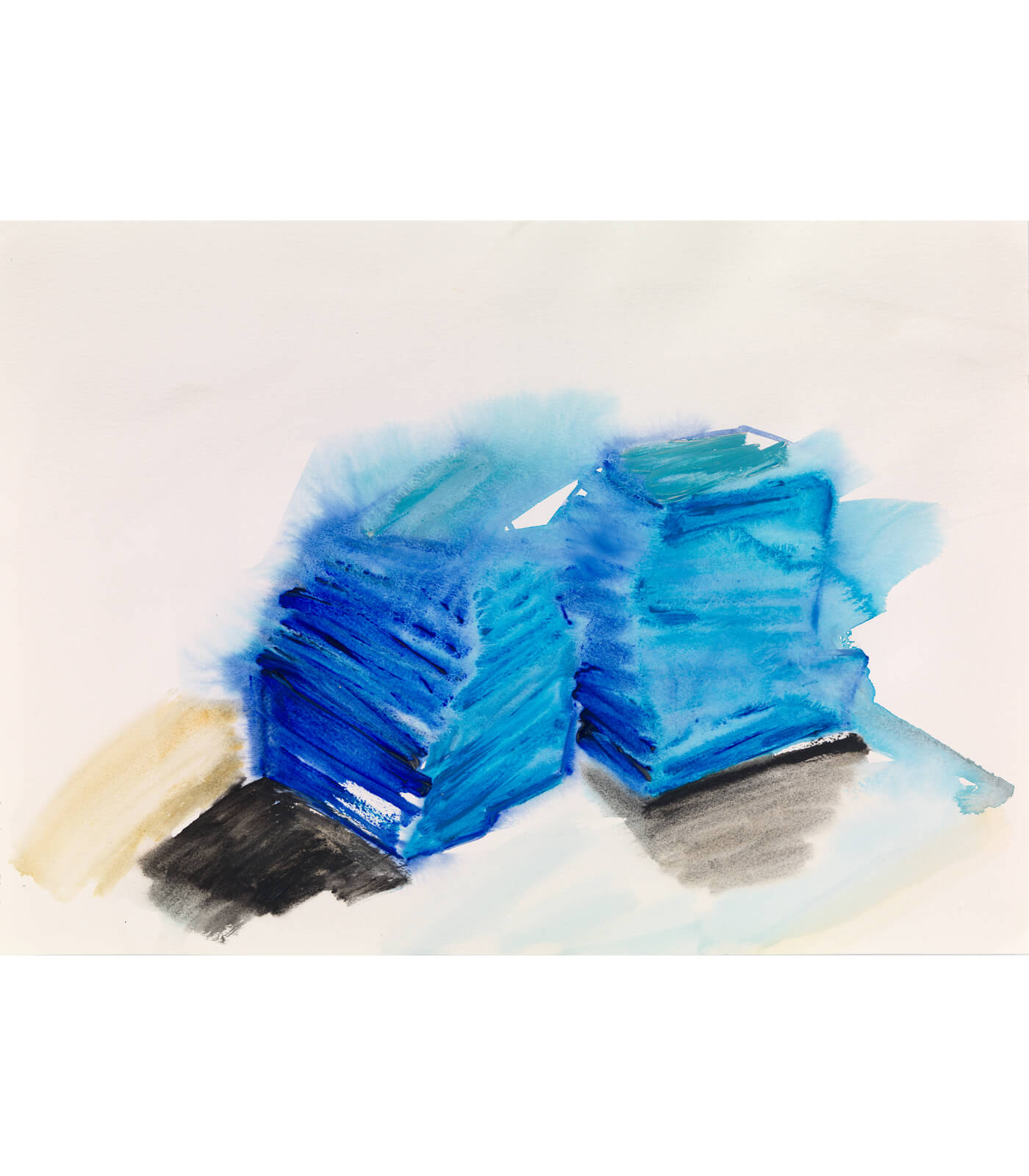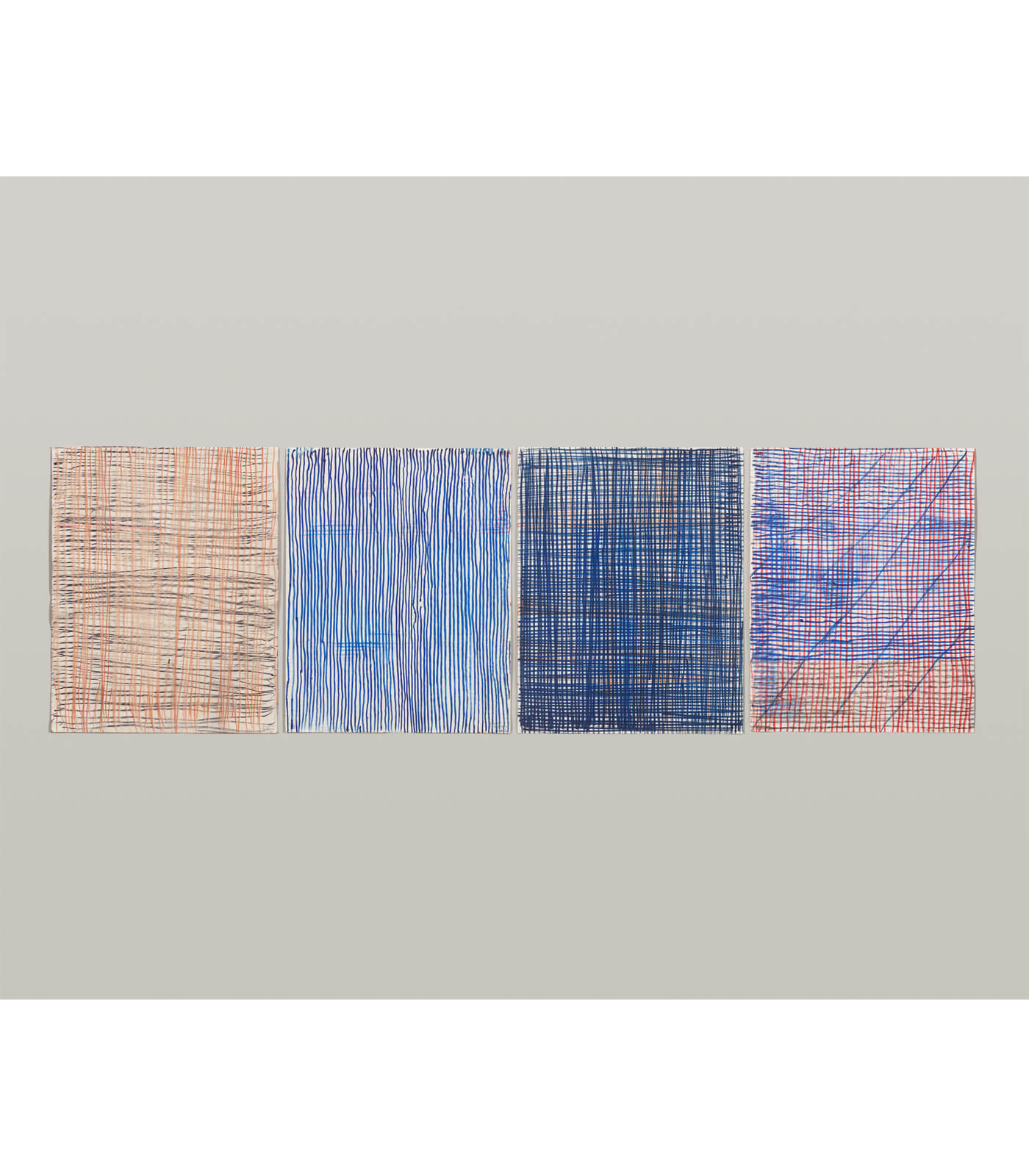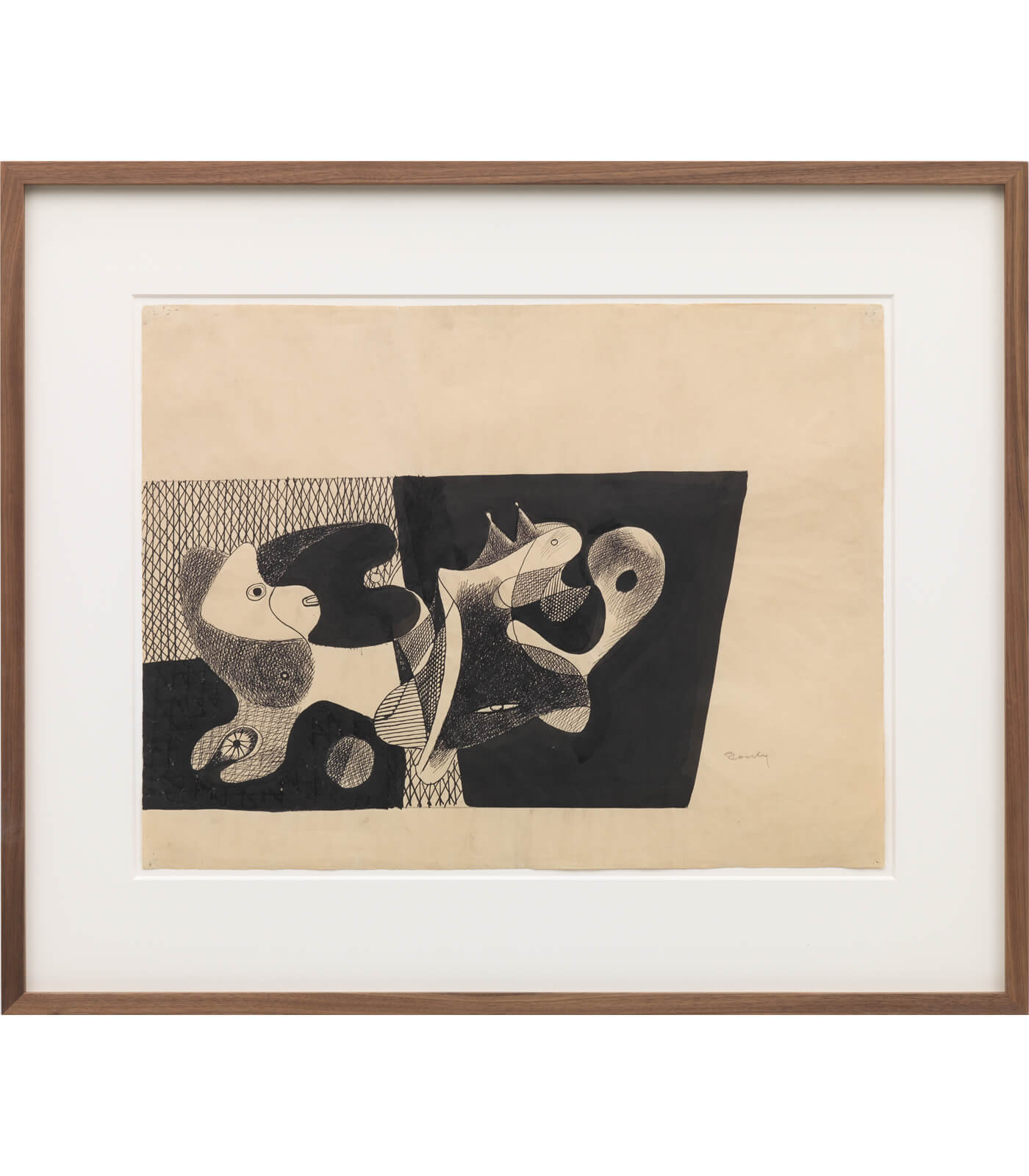
Drawing On The Mind
23 September – 27 November 2021
Hong Kong
‘When an artist takes a pen and makes a few strokes at random, or uses some scraps of wood to stain some color, we call them sketches. Some works are indeed painted by the artist casually, but this kind of carelessness reveals their subconscious, allowing them to overflow the boundaries of their thinking. From some early drawings, we can often find clues about the development of the artist’s later work. These occurrences are the reasons why artists cherish such works on paper and sculptures, as shown in this exhibition.’—Zhang Enli, 2021

Explore the exhibition
‘Drawing On The Mind’, a group exhibition curated by Chinese contemporary artist Zhang Enli. On view through 27 November, the exhibition includes selected works by Modern and Contemporary masters, including Louise Bourgeois, John Chamberlain, Alexander Calder, Arshile Gorky, Piero Manzoni, Henry Moore, Pablo Picasso, David Smith, Zeng Fanzhi, and Zhang Enli himself, revealing the thinking processes of the artists, and offering a glimpse into the subconscious of their minds.

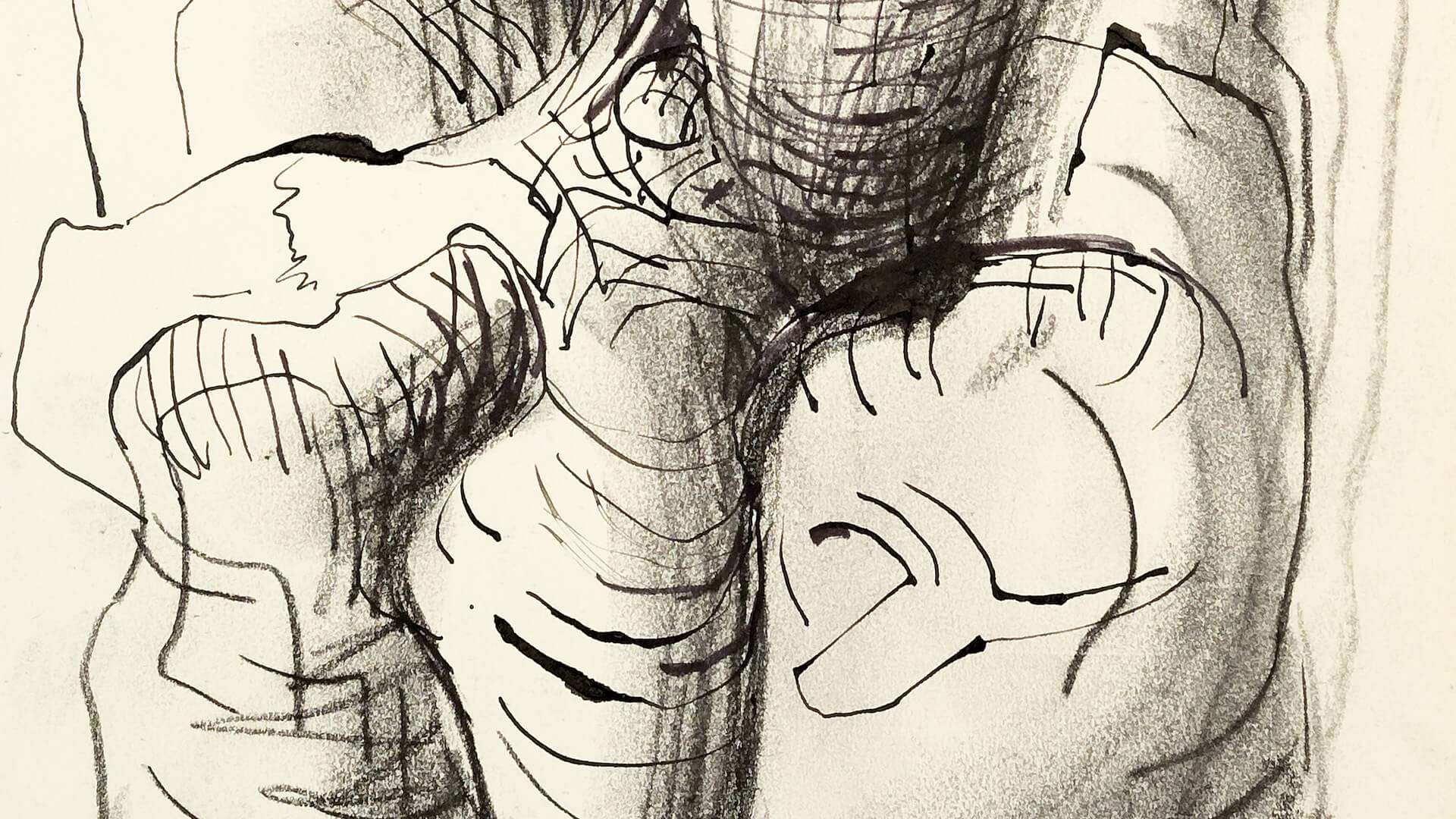
Echoing the coinciding Henry Moore solo exhibition, Enli added, ‘Compared to his most known sculptures, works in this presentation are more abstract and freehand style, they awaken our curiosity and provide us a new perspective to understanding the artist.’
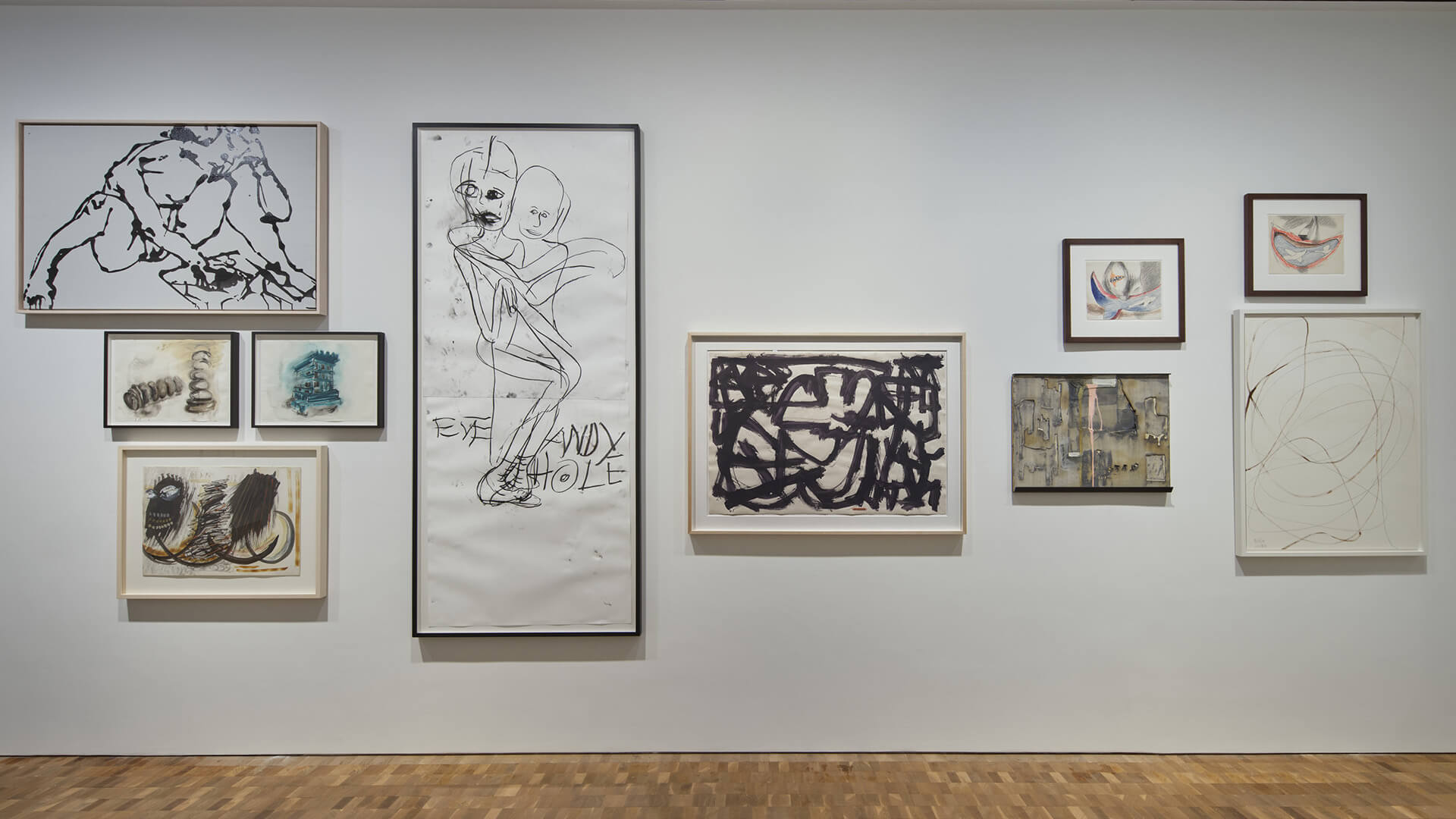
‘...I think there’s a lot [about the art world] that’s not entirely spoken about or recognized, which is the unseen and the unknown and the creative act as a deeply private experience. There is this great, powerful desire to just create something.’—Phyllida Barlow, 2021

In Conversation: Revealing the Creative Process
Join Chinese contemporary artist and ‘Drawing on the Mind’ curator, Zhang Enli, in conversation with Ying Kwok, Senior Curator for Digital and Heritage at Tai Kwun – Centre for Heritage and Arts. They will delve into the preparatory works of the artists’ creative process and subconscious, as well as Zhang’s curatorial concept.

On View in Hong Kong
‘Drawing On The Mind’ and ‘Henry Moore. Tapestries,’ are currently on view through 27 Nov 2021.
About the Artists

Phyllida Barlow
For almost 60 years, British artist Phyllida Barlow took inspiration from her surroundings to create imposing installations that can be at once menacing and playful. She created large-scale yet anti-monumental sculptures from inexpensive, low-grade materials such as cardboard, fabric, plywood, polystyrene, scrim, plaster and cement. These constructions were often painted in industrial or vibrant colors, the seams of their construction left at times visible, revealing the means of their making.
Barlow’s restless invented forms stretch the limits of mass, volume and height as they block, straddle and balance precariously. The audience is challenged into a new relationship with the sculptural object, the gallery environment and the world beyond.
‘There’s something about walking around sculpture that has the possibility of being reflective, like walking through a landscape,’ Barlow has said. ‘The largeness of sculpture has that infinite possibility to make one engage beyond just the object itself and into other realms of experience.’
Barlow exhibited extensively across institutions internationally and in 2017 represented Britain at the Venice Biennale.

Louise Bourgeois
Born in France in 1911, and working in America from 1938 until her death in 2010, Louise Bourgeois is recognized as one of the most important and influential artists of our time. For over seven decades, Bourgeois’s creative process was fueled by an introspective reality, often rooted in cathartic re-visitations of early childhood trauma and frank examinations of female sexuality. Articulated by recurrent motifs (including body parts, houses and spiders), personal symbolism and psychological release, the conceptual and stylistic complexity of Bourgeois’s oeuvre—employing a variety of genres, media and materials—plays upon the powers of association, memory, fantasy, and fear.
Bourgeois’s work is inextricably entwined with her life and experiences: fathoming the depths of emotion and psychology across two- and three-dimensional planes of expression. ‘Art,’ as she once remarked in an interview, ‘is the experience, the re-experience of a trauma.’ Arising from distinct and highly individualized processes of conceptualization, Bourgeois's multiplicity of forms and materials enact a perpetual play: at once embedding and conjuring emotions, only to dispel and disperse their psychological grasp. Employing motifs, dramatic colors, dense skeins of thread, and vast variety of media, Bourgeois's distinctive symbolic code enmeshes the complexities of the human experience and individual introspection.
Rather than pursuing formalist concerns for their own sake, Bourgeois endeavored to find the most appropriate means of expressing her ideas and emotions, combining a wide range of materials—variously, fabric, plaster, latex, marble and bronze—with an endless repertoire of found objects. Although her oeuvre traverses the realms of painting, drawing, printmaking, and performance, Bourgeois remains best known for her work in sculpture.
Bourgeois’s early works include her distinct 'Personages' from the late 1940s and early 1950s; a series of free-standing sculptures which reference the human figure and various urban structures, including skyscrapers. The ‘Personages’ served as physical surrogates for the friends and family Bourgeois had left behind in France, while also highlighting an interest in architecture dating back to her childhood. Her installation of these sculptures as clustered ‘environments’ in 1949 and 1950 foreshadowed the immersive encounters of installation art twenty years before the genre’s rise to prominence.
Bourgeois’s work was included in the seminal exhibition ‘Eccentric Abstraction,’ curated by Lucy Lippard for New York's Fischbach Gallery in 1966. Major breakthroughs on the international scene followed with The Museum of Modern Art in New York's 1982 retrospective of her work; Bourgeois's participation in Documenta IX in 1992; and her representation of the United States at the 45th Venice Biennale in 1993.
In 2001, Bourgeois was the first artist commissioned to fill the Tate Modern’s cavernous Turbine Hall. The Tate Modern’s 2007 retrospective of her works, which subsequently traveled to the Centre Pompidou in Paris; The Guggenheim Museum in New York; The Museum of Contemporary Art in Los Angeles; and The Hirshhorn Museum & Sculpture Garden in Washington D.C., cemented her legacy as a foremost grande dame of late Modernism.
Header image: Louise Bourgeois, ARCHED FIGURE, 1993 © The Easton Foundation/VAGA, NY, Photo: Christopher Burke

Alexander Calder
Alexander Calder was born in 1898, the second child of artist parents—his father was a sculptor and his mother a painter. In his mid-twenties, Calder moved to New York City, where he studied at the Art Students League and worked at the ‘National Police Gazette,’ illustrating sporting events and the Ringling Bros. and Barnum & Bailey Circus. Shortly after his move to Paris in 1926, Calder created his ‘Cirque Calder’ (1926–31), a complex and unique body of art. It wasn’t long before his performances of the ‘Cirque’ captured the attention of the Parisian avant-garde.
In 1931, a significant turning point in Calder’s artistic career occurred when he created his first kinetic nonobjective sculpture and gave form to an entirely new type of art. Some of the earliest of these objects moved by motors and were dubbed ‘mobiles’ by Marcel Duchamp—in French, mobile refers to both ‘motion’ and ‘motive.’ Calder soon abandoned the mechanical aspects of these works and developed suspended mobiles that would undulate on their own with the air's currents. In response to Duchamp, Jean Arp named Calder's stationary objects ‘stabiles’ as a means of differentiating them.
Calder returned to live in the United States with his wife, Louisa, in 1933, purchasing a dilapidated farmhouse in the rural town of Roxbury, Connecticut. It was there that he made his first sculptures for the outdoors, installing large-scale standing mobiles among the rolling hills of his property. In 1943, James Johnson Sweeney and Duchamp organized a major retrospective exhibition at the Museum of Modern Art, New York, which catapulted Calder to the forefront of the New York art world and cemented his status as one of the premier American contemporary artists.
In 1953, Calder and Louisa moved back to France, ultimately settling in the small town of Saché in the Indre-et-Loire. Calder shifted his focus to large-scale commissioned works, which would dominate his practice in the last decades of his life. These included such works as ‘Spirale’ (1958) for the UNESCO headquarters in Paris and ‘Flamingo’ (1973) for Chicago’s Federal Center Plaza. Calder died at the age of seventy-eight in 1976, a few weeks after his major retrospective, ‘Calder’s Universe,’ opened at the Whitney Museum of American Art, New York.

John Chamberlain
John Chamberlain (1927 – 2011) was a quintessentially American artist, channeling the innovative power of the postwar years into a relentlessly inventive practice spanning six decades. He first achieved renown for sculptures made in the late 1950s through 1960s from automobile parts—these were path-breaking works that effectively transformed the gestural energy of Abstract Expressionist painting into three dimensions. Ranging in scale from miniature to monumental, Chamberlain’s compositions of twisted, crushed, and forged metal also bridged the divide between Process Art and Minimalism, drawing tenets of both into a new kinship. These singular works established him as one of the first American artists to determine color as a natural component of abstract sculpture. From the late 1960s until the end of his life, Chamberlain harnessed the expressive potential of an astonishing array of materials, which varied from Plexiglas, resin, and paint, to foam, aluminum foil, and paper bags.
After spending three years in the United States Navy during World War II, Chamberlain enrolled in the Art Institute of Chicago and Black Mountain College, where he developed the critical underpinnings of his work. Chamberlain lived and worked in many parts of the United States, moving between New York City, Long Island, Los Angeles, Santa Fe, Connecticut, and Sarasota, before finally settling on Shelter Island. In many ways, each location provoked a distinct material sensibility, often defined by the availability of that material or the limitations of physical space. In New York City, Chamberlain pulled scrap metal and twelve-inch acoustic tiles from the ceiling of his studio apartment. He chose urethane in Los Angeles in 1965 (a material he had been considering for many years), and film in Mexico in 1968. He eventually returned to metal in 1972, and, in Sarasota, he expanded the scale of his works to make his iconic Gondolas (1981 – 1982). The movement of the artist and the subsequent evolution of the work is indicative not only of a kind of American restlessness but also of Chamberlain’s own personal evolution: he sometimes described his use of automobile materials as sculptural self-portraits, infused with balance and rhythm characteristic of the artist himself.
Chamberlain refused to separate color from his practice, saying, ‘I never thought of sculpture without color. Do you see anything around that has no color? Do you live in a world with no color?’. He both honored and assigned value to color in his practice—in his early sculptures color was not added, but composed from the preexisting palette of his chosen automobile parts. Chamberlain later began adding color to metal in 1974, dripping and spraying—and sometimes sandblasting—paint and lacquer onto his metal components prior to their integration. With his polyurethane foam works, color was a variable of light: ultraviolet rays or sunlight turned the material from white to amber. It was this profound visual effect that brought the artist’s personal Abstract Expressionist hand into industrial three-dimensional sculpture. Chamberlain moved seamlessly through scale and volume, creating material explorations in monumental, heavy-gauge painted aluminum foil in the 1970s, and later in the 1980s and 1990s, miniatures in colorful aluminum foil and chromium painted steel.
Central to Chamberlain’s works is the notion that sculpture denotes a great deal of weight and physicality, disrupting whatever space it occupies. In the Barges series (1971 – 1983) he made immense foam couches, inviting spectators to lounge upon the cushioned landscape. At the end of his career, Chamberlain shifted his practice outdoors, and through a series of determined experiments, finally created brilliant, candy-colored sculptures in twisted aluminum foil. In 2012, four of these sculptures were shown outside the Seagram Building in New York, accompanied by playful titles such as ‘PINEAPPLESURPRISE’ (2010) and ‘MERMAIDSMISCHIEF’ (2009). These final works exemplify Chamberlain’s lifelong dedication to change—of his materials, of his practice, and, consequently, of American Art.
Chamberlain has been the subject of numerous solo exhibitions, including two major Retrospectives at the Solomon R. Guggenheim Museum in New York NY in 2012 and 1971; ‘John Chamberlain, Squeezed and Tied. Foam and Paper Sculptures 1969-70,’ Dan Flavin Art Institute, Dia Center for the Arts, Bridgehampton NY (2007); ‘John Chamberlain. Foam Sculptures 1966–1981, Photographs 1989–2004,’ Chinati Foundation, Marfa TX (2005); ‘John Chamberlain. Current Work and Fond Memories, Sculptures and Photographs 1967–1995,’ Stedelijk Museum, Amsterdam, Netherlands (Traveling Exhibition) (1996); and ‘John Chamberlain. Sculpture, 1954–1985,’ Museum of Contemporary Art, Los Angeles CA (1986). Chamberlain’s sculptures are part of permanent exhibitions at the Chinati Foundation in Marfa TX and at Dia:Beacon in upstate New York. In 1964, Chamberlain represented the United States in the American Pavilion at the 32nd International Exhibition of the Venice Biennale. He received many awards during his life, including a Doctor of Fine Arts, honoris causa, from the College for Creative Studies, Detroit (2010); the Distinction in Sculpture Honor from the Sculpture Center, New York (1999); the Gold Medal from The National Arts Club Award, New York (1997); the Lifetime Achievement Award in Contemporary Sculpture by the International Sculpture Center, Washington D.C. (1993); and the Skowhegan Medal for Sculpture, New York NY (1993).

Arshile Gorky
Arshile Gorky was born an ethnic Armenian in Khorkom, Van, Ottoman Empire (present-day Türkiye) in c. 1904. Fleeing the genocide that claimed the life of his mother, he immigrated to the United States as a teenage refugee in 1920. After four years with relatives in Massachusetts, Gorky moved to New York and changed his name in honor of the celebrated Russian poet. Refusing all categories, whether artistic or political, as necessarily reductive, Gorky forsook assimilation in favor of celebrating his otherness, becoming a central figure of the cultural milieu of a city on the brink of Modernism.
After a decade of working in New York, where he achieved a prominent position as a leading artist, Gorky initiated a series of studies and paintings observed from nature while on holiday in Connecticut first, and then over two summers at a farm in Virginia. Frequently returning to fragmentary and idealized elements of his early life, Gorky incorporated memories from his childhood as well as his adult fears and desires, among the reality of his surroundings.

Jenny Holzer
Jenny Holzer is an American conceptual and installation artist whose work deploys text in public spaces across an array of media, including electronic signs, carved stone, paintings, billboards, and printed materials. Holzer’s oeuvre provokes public debate and illuminates social and political justice. Celebrated for her inimitable use of language and projects in the public sphere, Holzer creates a powerful tension between the realms of feeling and knowledge, with a practice that encompasses both individual and collective experiences of power and violence, vulnerability and tenderness.

Lee Lozano
Lee Lozano’s paintings are admired for their energy, daring physicality and tirelessness in investigating the body and issues of gender. Although lauded by Lucy Lippard in 1995 as the foremost female conceptual artist of her time, Lozano had disengaged herself from the New York art world completely by the early 1970s. She left behind a body of work of striking formal breadth and complexity. Lozano fought to consolidate her artistic self in a realm void of systems, rules, and group consciousness. She pursued a wholly independent solo studio practice, which culminated in her rejection of the New York art world and a boycott of women. She first refused to attend public art world functions and withdrew from exhibitions, finally relocating to Dallas, Texas. ‘By refusing to speak to women,’ says curator Helen Molesworth, ‘she exposed the systematic and ruthless division of the world into categories of men and women. By refusing to speak to women as an artwork, she also refused the demand of capitalism for the constant production of private property… The strategy of rejection is a powerful one.’

Anna Maria Maiolino
Anna Maria Maiolino is one of the most significant artists working in Brazil today. Born 1942 in Italy, Maiolino’s practice expresses a concern with creative and destructive processes. Working across a wide range of disciplines and mediums—spanning drawing, printmaking, poetry, film, performance, installation and sculpture—Maiolino relentlessly explores notions of subjectivity and self.
Through fragmentation and abstraction, Maiolino’s surfaces are rich with metaphor, alluding to and questioning language, sexuality, desire and the unconscious. The artist’s deeply formative migration from post-war Southern Italy to a politically unstable South America, and her linguistic passage from Italian to Portuguese, engendered an enduring fascination with identity. Maiolino has perfected a dialogue between opposite yet complementary categories in a practice that dissolves dichotomies of inner and outer, self and other. Hers is an art in search of a new language for the liminal realm of daily human existence.
Shadowed by the turmoil and governance of military repression, Maiolino’s early experiments in the 1960s connected her to important movements in Brazilian art history such as New Figuration and New Objectivity. Maiolino took part in the radical reconfiguring of the art object—and thus the art institution and the artist—during this period. Along with Lygia Pape, Lygia Clark, and Hélio Oiticica, Maiolino participated in the 1967 exhibition, ‘New Brazilian Objectivity,’ which symbolized a cultural shift in previous constructivist traditions and established a new vision for the production of art in Brazil.
Since the early 1980s Maiolino has worked with malleable materials that, through her handling, come to bear the imprint of unconscious gestures, daily rituals and sensory expressions of being. Her mark-making is based on the repetition of basic actions that are recorded in the material; her forms the result of this laborious processing of raw material, like the basic bodily functions of eating and defecating. Hers is a work of liberation: abstraction is freed from the more repressed and puritanical precepts of Minimalism and brought back into the service of the active, desiring body.

Piero Manzoni
The renowned Italian artist Piero Manzoni emerged as a powerful voice for the avant-garde in the 1950s, debuting as an artist at the ‘4a Fiera mercato: Mostra d’arte contemporanea’ in 1956. A self-taught painter, his work heavily featured anthropomorphic silhouettes and the impressions of objects. He began making his ‘white paintings’—later named ‘Achromes’—in 1957, at first with rough gesso and then with kaolin, as well as with creased canvases or surfaces divided into squares.
In 1959, the artist began his series which experimented with the display of inflated white balloons. The results—‘Corpi d’aria (Bodies of Air)' and ‘Fiato d’artista (Artist’s Breath),’ where balloons were poised on a tripod or wooden plinth—extended the creative experimentation first visualized in the ‘Achromes’ as Manzoni embarked upon works that used an entirely new visual language, reframing artistic interpretation. In July 1960, he presented ‘Consumazione dell’arte / dinamica del pubblico / divorare l’arte’ in Milan, during which he offered the public hard-boiled eggs with his thumbprint on them. By 1961, Manzoni was signing actual people, turning them into ‘living sculptures,’ and awarding them with a certificate of authenticity.
Alongside his work as an abstract avant-garde painter, Manzoni contributed to and collaborated with numerous artist groups and initiatives. As his artistic activity intensified, he began participating in group shows and signing manifestos alongside other artists, including Enrico Baj, Guido Biasi, Ettore Sordini, and Angelo Verga. For a period of time he embraced the Movimento Arte Nucleare, before abandoning it in 1958.
On several occasions, he showed his work with Agostino Bonalumi and Enrico Castellani, and he collaborated with artists of the Zero group in Düsseldorf and other European neo-avant-garde groups. In 1959, he founded the Galleria Azimut in Milan with Castellani, opening the gallery with an exhibition of his ‘Linee (Lines).’ The pair simultaneously published two issues of the Azimuth magazine. The second issue (1960) included one of Manzoni’s seminal texts ‘Libera dimensione’ or ‘Free dimension.’

Takesada Matsutani
From the early 1960s until the 1970s Matsutani was a key member of the of the influential post war Japanese art collective, the Gutai Art Association. Over six decades Matsutani has developed a unique visual language of form and materials. As part of the Gutai group, Matsutani experimented with vinyl glue, using fans and his own breath to manipulate the substance, creating bulbous and sensuous forms reminiscent of human curves and features.
In 1966, Matsutani received a grant from the French government after winning first prize in the 1st Mainichi Art Competition and subsequently moved to Paris where he began working at Stanley William Hayter's renowned printmaking studio, Atelier 17. During the four years he worked at the studio, he learnt French, married and established his base in Paris. Working alongside Hayter opened Matsutani up to a new form of artistic experimentation and offered him a newfound confidence. Matsutani began to rethink his practice and a new elemental aesthetic language began to emerge that was both controlled and organic.
After the Gutai group disbanded in 1972, Matsutani eased into a radical yet consistent new body of work, informed by his experience at Atelier 17. Faithful to his Gutai roots, he strove to identify and convey the essential character of vinyl glue with graphite, that were to become his signature materials. Matsutani began creating vast expanses of metallic black graphite on mural-size sheets of paper built up with painstaking individual strokes. This ritualized manner presents a time-based record of his gestures, while reminiscent of his artistic beginnings in Japan, it has been translated into an artistic language that is uniquely his own.
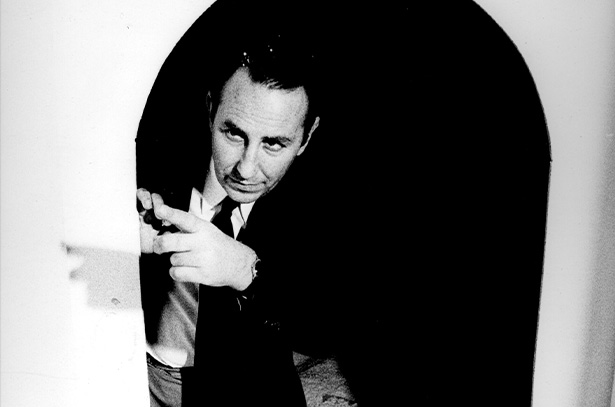
Fabio Mauri
Post-war Italian artist Fabio Mauri’s practice encompasses performance, film, installation, found-object sculpture, mixed media works and theoretical writings to question readings of history and the associated power of language and ideology associated with the Second World War and the Holocaust. Sobering, direct, and poetically reflective, Mauri’s art addresses themes of communication and manipulation, and brings light to the ‘political dimension of the image,’ as it is projected and proliferated throughout contemporary society.Born in Rome in 1926, Mauri’s youth was marked by the events of war and Fascism—traumas and horrors that would profoundly impact and influence his life and work. Raised among writers and painters, Mauri befriended intellectuals in Italy’s new avant-garde, among them the novelist Italo Calvino, philosopher and semiotician Umberto Eco, film director and aficionado Pier Paolo Pasolini, visual artist Jannis Kounellis, art historian Maurizio Calvesi and the writer Edoardo Sanguineti. ‘I patiently recompose,’ the artist commented, ‘with my own hands, the experience of the shameful. I explore its mental possibilities… I behave as if that reality (that history) had not had its final condemnation, but were still adding further data right up to our time today.’
The screen as a symbol emerges as early as 1957 and remains essential to the articulation of his work. Whether cinema, television or computer it allows for an exploration of meaning, images and codes. Through this Mauri proposes to his audience an examination, a critique and an experience of the ‘real.’
Mauri worked for the family company, the publishing house Bompiani, from 1957 to 1975 as director of the Milan and Rome headquarters. Along with Umberto Eco and Edoardo Sanguineti, he founded the magazine Quindici (1967) and the magazine for arts criticism, La citta di Riga in 1976. Such as his oeuvre, Mauri is undefinable practicing as artist, playwright, publisher, critic and teacher throughout his career. He never belonged to any specific artistic movement but kept a close proximity to various artists and discourses. Mauri has exhibited his work internationally in prominent institutions.

PAUL McCARTHY
Paul McCarthy is widely considered to be one of the most influential and groundbreaking contemporary American artists. Born in 1945, and raised in Salt Lake City, Utah, he first established a multi-faceted artistic practice, which sought to break the limitations of painting by using unorthodox materials such as bodily fluids and food. He has since become known for visceral, often hauntingly humorous work in a variety of mediums—from performance, photography, film and video, to sculpture, drawing and painting.
During the 1990s, he extended his practice into installations and stand-alone sculptural figures, utilizing a range of materials such as fiberglass, silicone, animatronics and inflatable vinyl. Playing on popular illusions and cultural myths, fantasy and reality collide in a delirious yet poignant exploration of the subconscious, in works that simultaneously challenge the viewer’s phenomenological expectations.
Whether absent or present, the human figure has been a constant in his work, either through the artist‘s own performances or the array of characters he creates to mix high and low culture, and provoke an analysis of our fundamental beliefs. These playfully oversized characters and objects critique the worlds from which they are drawn: Hollywood, politics, philosophy, science, art, literature, and television. McCarthy’s work, thus, locates the traumas lurking behind the stage set of the American Dream and identifies their counterparts in the art historical canon.
McCarthy earned a BFA in painting from the San Francisco Art Institute in 1969, and an MFA in multimedia, film and art from USC in 1973. For 18 years, he taught performance, video, installation, and art history in the New Genres Department at UCLA, where he influenced future generations of west coast artists and he has exhibited extensively worldwide. McCarthy’s work comprises collaborations with artist-friends such as Mike Kelley and Jason Rhoades, as well as his son Damon McCarthy.

Fausto Melotti
Italian sculptor, painter and poet, Fausto Melotti is considered a pioneer of Italian art and is acknowledged for his unique contribution to the development of mid-century European Modernism. Coming of age in prewar Milan, and living through the horrors of the Second World War, Melotti metabolized wartime devastation in his work by returning to Renaissance principles of harmony, order, geometry, and musical structure, which he integrated into a highly personal yet universally accessible artistic language that expresses the full range of emotional experiences in modern human existence.
Before turning to art, Melotti studied music, mathematics and engineering—disciplines that exerted clear influence upon his distinctive practice across subsequent decades. Melotti trained as a figurative artist, studying under Italy’s leading Symbolist sculptor Adolfo Wildt at the Accademia di Brera in Milan. There he befriended fellow pupil Lucio Fontana in 1928, and in the following decade shifted his focus to abstraction and a new non-objective art. Melotti developed influential friendships with the Rationalist architects of Gruppo 7 and the abstract artists who gravitated around Galleria Il Milione. With Fontana, he joined the ‘Abstraction-Création’ movement, developing firm ideas about non-figurative art. Influenced by his education in engineering and music, Melotti’s first abstract sculptures were geometrical, and echoed the young artist’s academic training in order, rhythm, proportions and form.
Melotti’s ceramics of the 1940s respond to the pain, trauma, and despair that crowded his thoughts in the aftermath of the Second World War. Aerial bombings destroyed the artist’s studio in Milan and profoundly altered his artistic vision, precipitating a literal and symbolic rupture in his idealized pursuit of abstraction. His attention shifted to the craft and production of ceramics and terracotta. Rendered in polychromatic glazes, the enigmatic figures in these works illustrate the artist’s urgent and necessary return to figuration.
By the 1960s, Melotti had returned to sculpture, using a new language built upon delicate threads and thin sheets of brass, iron, and gold to express a more resolved and distinctly humanist sensibility. Delicately wrought, almost fragile constructions became enriched by a new narrative, dream-like and symbolic. These weightless works resemble aerial drawings incorporating space, air and transparency. His later work of the 1970s and 1980s is characterized by rhythmic geometric forms with an underlying humanist narrative that curator Douglas Fogle describes as ‘quivering just on the threshold between the solidity of figuration and the immateriality of abstraction.’

Henry Moore
The human figure, enigmatically isolated or in relationship with others, is both the stimulus and the crux of all Henry Moore’s works. For him, creating his sculptures was not so much an abstract exercize in looking at the human figure, but a personal investigation and violation of the artist’s own body: ‘When I carve into the chest,’ he commented, ‘I feel as if I were carving into my own.’ In 1943, Moore was commissioned to carve a Madonna and Child for the Church of St. Matthew, Northampton; this sculpture was the first in an important series of family-group sculptures. Moore's large-sized abstract sculptures can be encountered in numerous international public places (like Reclining Figure, 1956–58, UNESCO, Paris). Overlooked sometimes, are his fascinating drawings, often inspired by poetry and mythology. For his works on paper, Moore received important stimuli from so-called primitive art from Africa, the South Seas and Egypt, but at the same time from contemporaries such as Picasso and Giacometti. Hovering between abstraction and figuration, Moore developed his own unique language of form.
Born in 1898 and originally from West Yorkshire, Moore studied at both the Leeds School of Art and the Royal College of Art in the 1920s. Before World War II Moore’s works were widely exhibited in his home country, in the 1940s he also started to gain international success. In 1946, Moore's radical vision on sculpture was celebrated in his first international retrospective at the Museum of Modern Art in New York. In 1948 Moore represented Great Britain at the 24th Venice Biennale and won the International Prize for Sculpture for his participation the same year. In 1963 the artist was awarded the British Order of Merit. To this day, Moore is celebrated as the most important British sculptor of the twentieth century for his particular addressing of the human form and uncompromising vision, which make him an abiding influence for contemporary artists.
Together with his daughter Mary Moore, he established the Henry Moore Foundation in 1977, which administers his works. Since his death in 1986, the interest in his work has only continued to grow: in 2015 Moore’s works were presented at National Roman Museum in Rome and in 2017 he was the subject of a solo exhibition at the Arp Museum Bahnhof Rolandseck, Germany. At Tate Modern, London, two rooms are dedicated to display over 30 of his works.

David Smith
David Smith is regarded as one of the most innovative artists and important American sculptors of the 20th century. He transformed sculpture by rejecting the traditional methods of carving and casting in favor of torch-cutting and welding, becoming the first artist known to make welded sculpture in America. These methods allowed him to work in an improvisational manner in creating open and large-scale, abstract sculptures. In his later years, he installed his sculptures in the fields of his home in the Adirondack Mountains, where a dialogue between the art object and nature emerged as central to his practice. His sculpture-filled landscape inspired Storm King Art Center and other sculpture parks throughout the world, as well as anticipating the land and environmental art movements.
Smith was born in 1906 in Decatur, Indiana. He worked briefly as a welder in an automobile factory before moving to New York City to become an artist in 1926. He studied painting at the Art Students league, where Cubism and Surrealism were foundational to his practice. He began welding sculpture around 1933 after seeing reproductions of constructed steel sculptures by Pablo Picasso and Julio González. He later became associated with the abstract expressionist movement and paved the way for minimalism with radically simplified, geometric works. Painting and drawing remained integral to what Smith called his ’work stream’. He embraced a holistic attitude toward artmaking and dismissed the idea of a separation between mediums. Acknowledging the tradition of painted sculpture throughout art history and drawing from the bold palettes of modernism and pop culture, Smith often painted his sculptures. David Smith died in 1965, leaving behind an expansive, complex, and powerful body of work that continues to exert influence upon subsequent generations of artists.
Smith began exhibiting his work as early as 1930. His first survey was organized by the Museum of Modern Art, New York in 1957. His sculpture was represented by the United States at the São Paulo Biennale in 1951 and at the Venice Biennale in 1954 and 1958. Posthumous retrospectives have been held at the Solomon R. Guggenheim Museum (1979 and 2006, which traveled to Tate Modern, London and the Centre Pompidou, Paris) and at the Los Angeles County Museum of Art (2011, which traveled to the Whitney Museum of American Art, New York and the Wexner Center for the Arts, Columbus, Ohio). Other major surveys have been organized at the Sezon Museum of Art, Tokyo (1994, traveled throughout Japan), the Museo Nacional Centro de Arte Reina Sofía, Madrid (1996), Storm King Art Center (1997–99), and Yorkshire Sculpture Park, Wakefield, UK. A three-volume, fully illustrated catalogue raisonné of Smith’s sculpture was published in 2021 by the Estate of David Smith and distributed by Yale University Press. A biography by Michael Brenson, David Smith: The Art and Life of a Transformational Sculptor, was published by Farrar, Straus, and Giroux in 2022.
Inquire about available works
Drawing On The Mind
With works by Phyllida Barlow, Louise Bourgeois, Alexander Calder, John Chamberlain, Arshile Gorky, Jenny Holzer, Bharti Kher, Lee Lozano, Anna Maria Maiolino, Piero Manzoni, Takesada Matsutani, Fabio Mauri, Paul McCarthy, Fausto Melotti, Henry Moore, Pablo Picasso, David Smith, Zeng Fanzhi, Zhang Enli
–
‘Drawing On The Mind’ is on view now through 27 November 2021 at Hauser & Wirth Hong Kong.
Current Exhibitions
1 / 11
